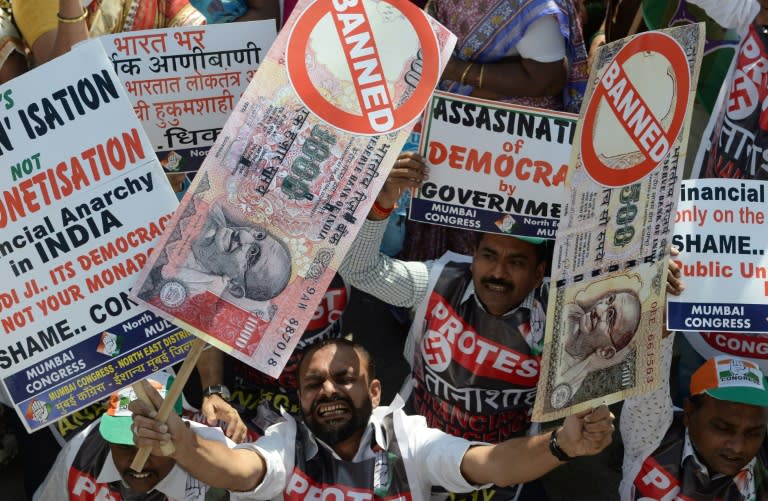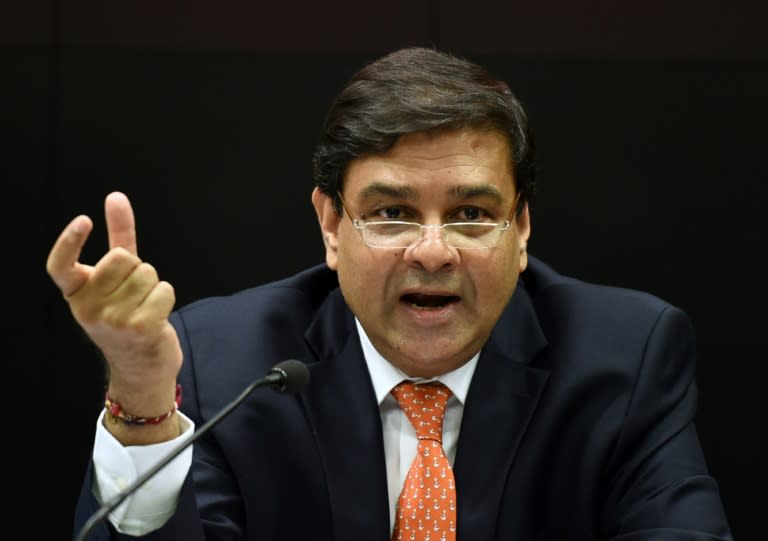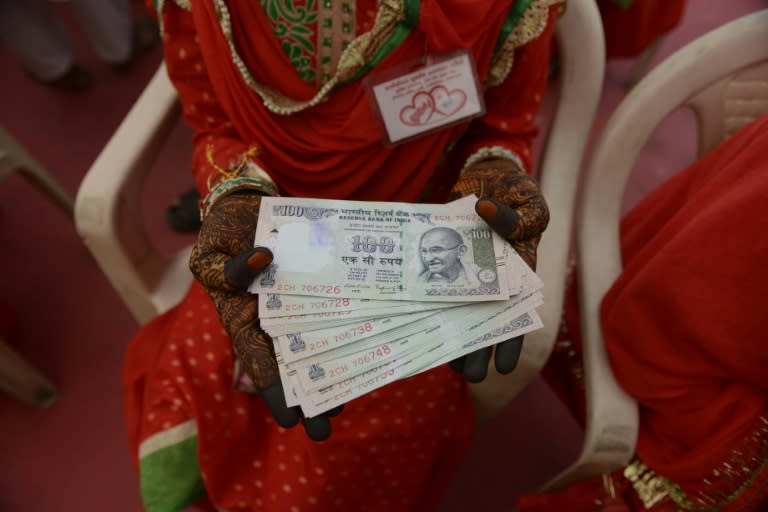India holds interest rates steady despite cash chaos
India's central bank left interest rates unchanged at 6.25 percent Wednesday, defying expectations of a cut following the government's shock move to withdraw high-denomination banknotes from circulation. The Reserve Bank of India (RBI) said the benchmark repo rate -- the level at which it lends to commercial banks -- would stay steady after it was cut to 6.25 percent in October. Lower interest rates boost consumer spending, which is likely to see a sharp downturn in the wake of the government's so called demonetisation scheme but it can also cause an uptick in inflation. "The MPC (monetary policy committee) was of the view that given the reduction of policy rate of 25 basis points in October... a further reduction in the policy rate is not warranted at this juncture," RBI governor Urjit Patel told reporters. The central bank also lowered its outlook for gross value added growth from 7.6 percent to 7.1 percent. GVA is different from gross domestic product, the measure typically used to show a country's economic growth. However, it is indicative of how the GDP could move, although not by the same amount. Pressure to cut rates mounted last week, with analysts expecting a 25 basis points cut after India reported a lower-than-expected 7.3 percent growth of GDP in the three months to the end of September. While that is better than most major economies, it is still lower than earlier predictions. Analysts expect a further dip in those numbers driven by a spending slowdown after most of India's currency was withdrawn from circulation last month by the government in an effort to bring back billions in so-called 'black', or undeclared, money into the formal system. The move unleashed chaos and a spending crunch across sectors. Ratings agency Fitch has already lowered its India growth forecast for the current fiscal year from 7.4 percent to 6.9 percent, saying the cash crunch will bring "temporary disruptions" to economic activity. Ashutosh Datar, an economist at IIFL Institutional Equities, said he was surprised the RBI had not taken action to boost consumer spending. - 'Negative surprise' - "This is a negative surprise for sure. I was expecting a 50 basis points rate cut and they’ve done nothing," he told AFP. "Since the impact of the demonetisation is unclear, I expected them to be proactive and do a rate cut. They'e done the exact opposite by deciding to wait and watch." However Sunil Sinha, principal economist at rating agency India Ratings & Research, said that the decision to keep rates unchanged was logical. "RBI had already accounted for inflation in the last monetary policy and a further rate cut was not warranted," said Sinha. Speaking alongside Patel, the RBI's deputy governor Rama Subramaniam Gandhi insisted there was no reason for consumers to panic despite the lack of cash and said machines were working flat out to print more notes. "The Reserve Bank and the central government run note presses are working to their full capacity and all efforts are being made to reach the notes to every part of the country," he said. "We reiterate that there is adequate supply of notes and hoarding of notes helps nobody's cause. "We also strongly advocate the public to switch to digital payment modes given that there several options, there are adequate safeguards and there is an increasing acceptability of this mode of payment by a large number of recipients." Patel took over at the helm of the RBI in September when he succeeded Raghuram Rajan who had made controlling inflation a priority. Despite cutting rates four times, Rajan came under government pressure to make deeper cuts to help stimulate spending. Since his departure, interest rate decisions are made by a new monetary policy committee, rather than the chief of the central bank. Previously the governor would decide whether to cut rates. Now they are set by a six-member committee, including Patel, two RBI executives, and three independent economists appointed by the government.





